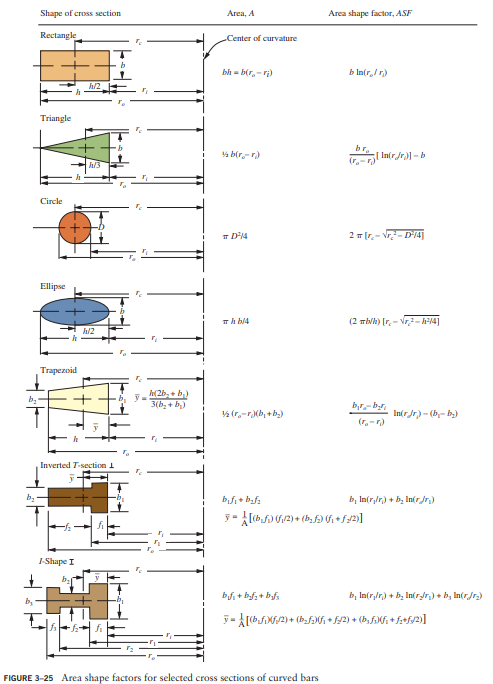A curved bar has a rectangular cross section 15.0 mm thick by 25.0 mm deep as shown in Figure 3–26.
The bar is bent into a circular arc producing an inside radius of 25.0 mm. For an applied bending moment of +400 N . m, compute the maximum tensile and compressive stresses in the bar.



